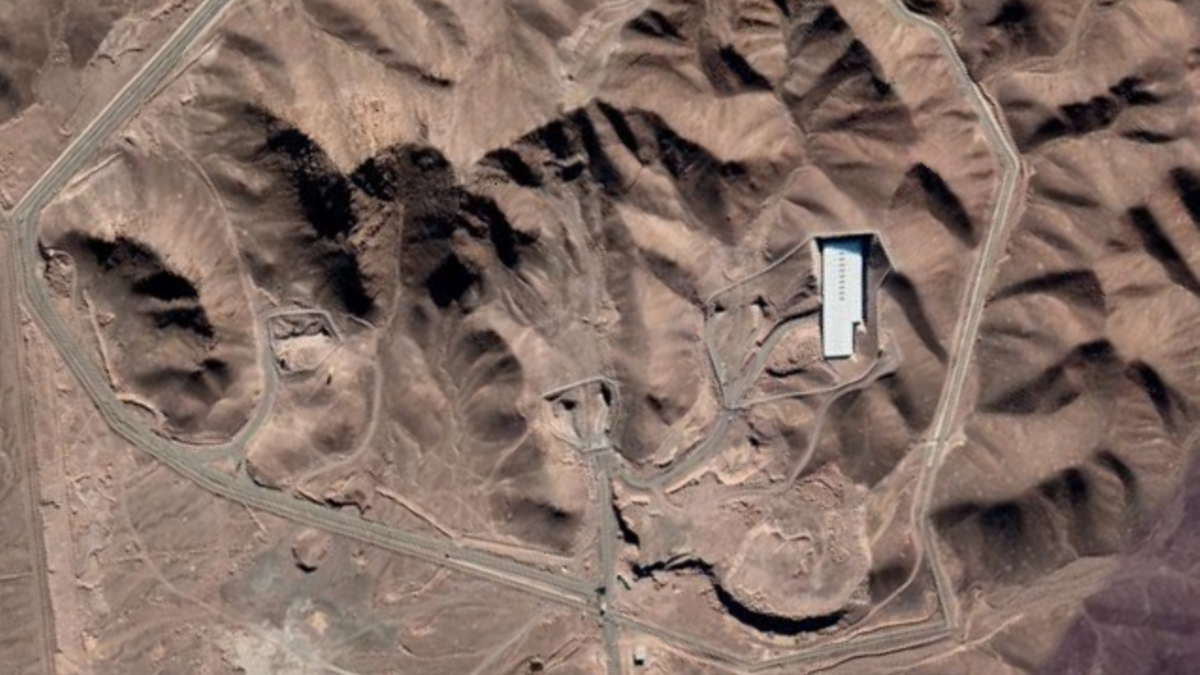The existence of Fordow was made public in 2009, not by the Iranian authorities, but for the US, Great Britain and France, who accused Iran of building this installation in secret without informing the International Atomic Energy Agency (OIEA). Since then, Fordow has been a matter of concern and debate in the international community.
Iran’s underground strength
Fordow houses more than 1,000 centrifuging, although it has been suggested that it could house up to 3,000. A fraction of these machines are advanced IR-6, capable of enriching uranium up to 60%. According to the nuclear Threat Initiative, in October 2023, Iran had a total of 4,486.8 kg of enriched uranium, and by May 2024, he had enriched 142.1 kg of 60%uranium.
ForDow’s construction began long before its public revelation. 2004 satellite images already showed their basic structures, and the OIEA has images dating from 2002. In 2009, Iran told OIEA that the decision to build this plant underground was due to the “threats of military attacks against Iran”. The installation was designed to serve as a contingency for the near Natanz plant, which was considered vulnerable to military attacks.
In March 2023, the OIEA reported having discovered enriched uranium at 83.7% purity in Fordow. A subsequent report, from December 2024, indicated that Iran was accelerating the enrichment process, reaching a monthly production capacity of more than 34 kilos of 60%enriched uranium, compared to the previous 4.7 kilos.
Fordow’s strategic importance
The ForDow plant is crucial for the Iranian nuclear program. Experts warn that with 50 kilos of highly enriched uranium, it would be possible to make a nuclear head. The OIEA has expressed concern about the production of highly enriched uranium in Iran, remembering that it is the “unique state not possessing nuclear weapons that does it.”
ForDow’s protection has been a priority for the Iranian regime. In 2016, Iran parked in Fordow a S-300 anti-aircraft missile system, and satellite images show five tunnels excavated in a group of mountains, a large support structure and a wide security perimeter. It is estimated that the main rooms of Fordow are between 80 and 90 meters underground, which explains why it has been difficult to damage it despite Israel’s attempts.
Today’s attack by the US underlines the strategic importance of Fordow and his role in the Iranian nuclear program. As tensions continue, the international community continues to closely observe the developments in this underground and almost impenetrable installation.
Where are Iranian nuclear facilities?
The Iranian nuclear program is distributed throughout many places. Although the threat of Israeli air attacks looms for decades, only some of the locations have been built underground.
Will I go a nuclear weapons program?
The United States and the UN Nuclear Control Agency believe that Iran had a coordinated and secret program of nuclear weapons that stopped in 2003. The Islamic Republic denies having had it or planned to have it.
Iran accepted restrictions on its nuclear activities in exchange for a relief of international sanctions under a 2015 agreement with world powers.
That pact collapsed after Donald Trump – then fulfilled his first mandate as president – withdraw the United States from the pact in 2018 and Iran began to abandon the restrictions the following year.
Are your enrichment of uranium increasing?
Yes. Iran has been expanding its uranium enrichment program since the pact was broken, reducing the so -called “breakup time” that would need to produce enough uranium suitable for weapons for a nuclear bomb to days or just over a week from at least one year under the 2015 agreement.
Actually, manufacturing a pump with that material would take longer. How much time is less clear and is the object of debate.
Iran is enriching uranium up to 60% of the fisheze purity, about 90% of the purity for weapons, in two facilities, and in theory it has enough enriched material at that level, if it is further enriched, for six pumps, according to a criterion of the International Atomic Energy Agency (OIEA), the UN Control Agency.
Natanz
Netanyahu said Friday that Israel had attacked Natanz as part of his operation.
It is a complex located in the heart of the Iranian enrichment program, in a plain adjacent to mountains on the outskirts of the Shiite Muslim city of Qom, south of Tehran. Natanz houses two enrichment plants: the immense underground fuel enrichment plant (FEP) and the pilot fuel enrichment (PFEP).
An Iranian opposition group in exile revealed in 2002 that Iran was building Natanz in secret, which triggered a diplomatic confrontation with the West about its nuclear intentions that continues today.
The FEP was built for commercial enrichment, with the capacity to house 50,000 centrifugers. There are currently about 16,000 centrifuging, of which some 13,000 are in operation, refining uranium up to 5% purity. Diplomats who know Natanz describe the FEP as an installation of about three plants underground.
For a long time, the damage that can cause Israeli air attacks has been discussed. There have been damage to the centrifugators of the FEP by other means, including an explosion and an energy cut in April 2021 that, according to Iran, was an attack by Israel. The PFEP, located on the surface, only houses hundreds of centrifugators, but will enriches there to 60% purity.
Iran has a partially built heavy water research reactor, originally called Arak and now Khondab. Heavy water reactors are a risk of nuclear proliferation because they can easily produce plutonium that, like enriched uranium, can be used to manufacture the nucleus of an atomic pump.
Under the 2015 agreement, the construction was arrested, the core of the reactor was withdrawn and filled with concrete to disable it. The reactor had to redesign “to minimize plutonium production and not produce plutonium suitable for weapons in normal functioning conditions.” Iran has informed the OIEA that the reactor plans to put into operation in 2026.
Iran’s nuclear research facilities in Tehran include a research reactor. Busher The only Iranian nuclear power plant in operation, located on the Gulf coast, uses Russian fuel that Russia recovers when spent, which reduces the risk of proliferation.
Source: Ambito




